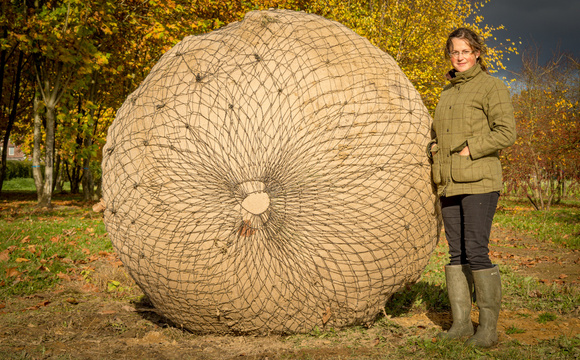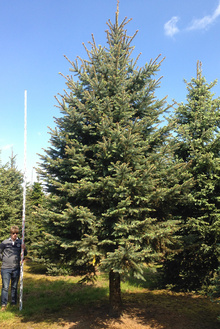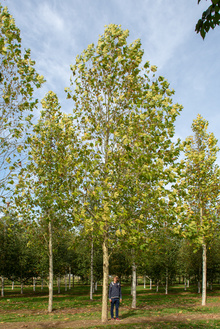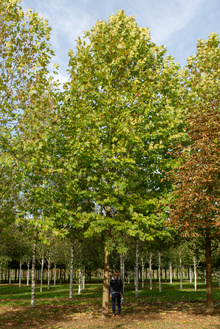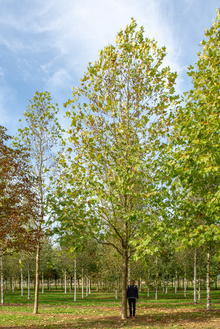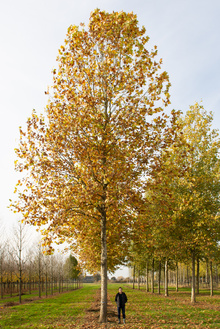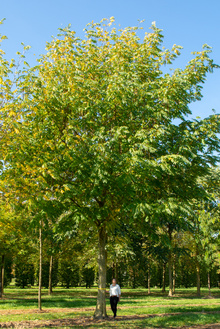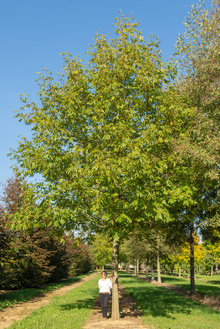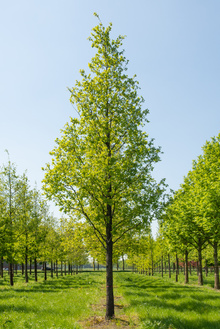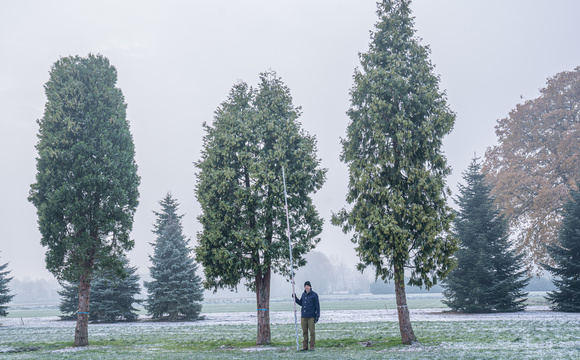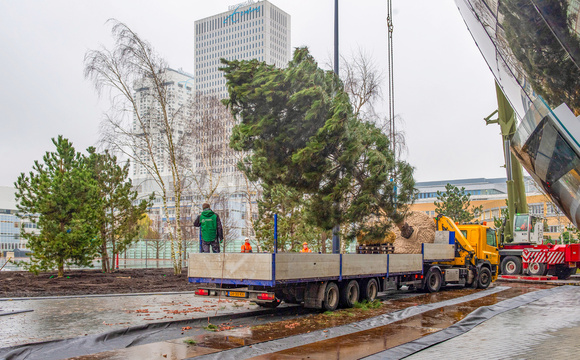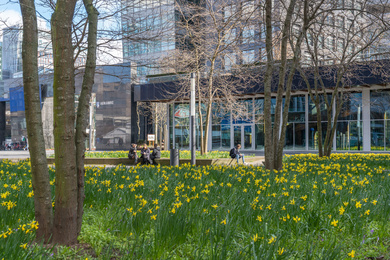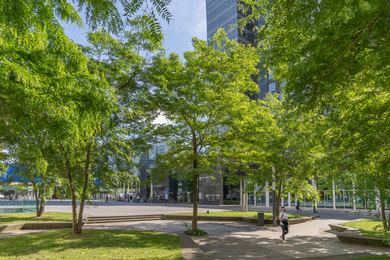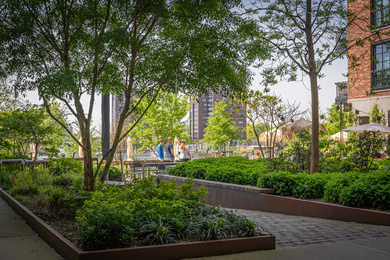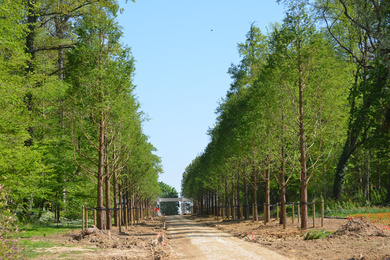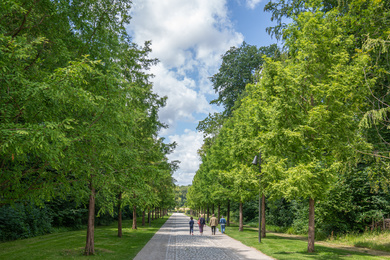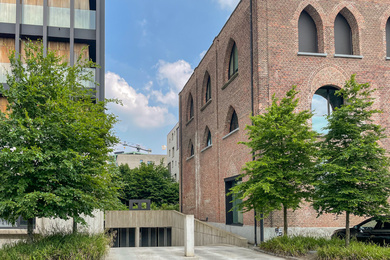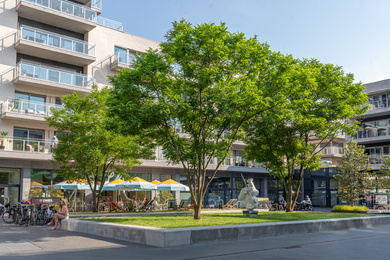By a large-sized tree, we mean an avenue tree with a trunk circumference (girth) from 60-70 centimetres, measured from a height of one metre. The tree is then usually about seven metres tall. The maximum trunk circumference of a large tree extends to 120-140 cm. These trees are usually taller than ten metres. At size 60-70, the uprooted tree has a root ball diameter of 170 cm. and a weight from 1,500 kilos. See the root ball information table for indicative dimensions per size. Due to the use of different uprooting machines, the root ball size may vary slightly, but in principle, the size of the root ball depends on the size of the tree (trunk size and canopy volume).
These sizes not only give an indication but also show that transport, planting and anchoring require a well-considered plan. Heavy transport sometimes involves a permit and loading and unloading a large tree also requires specific knowledge. Thanks to years of experience and cooperation with various specialised partners, we can advise on these matters and ensure a successful planting.

